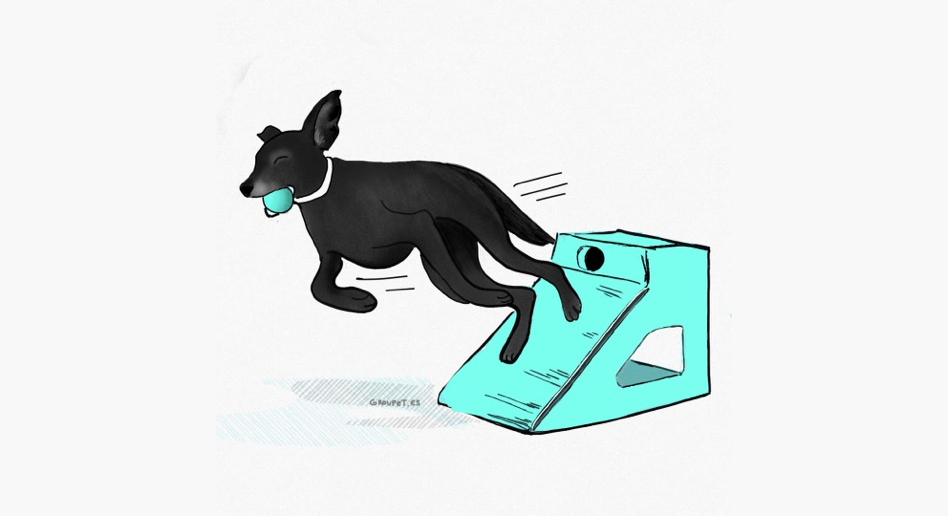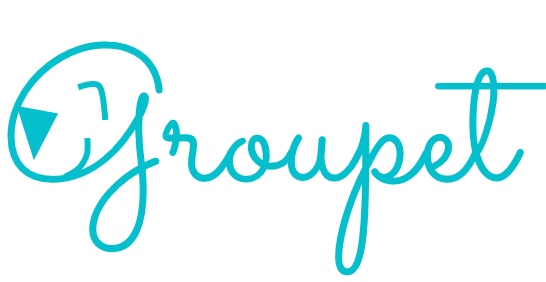
Tips and news
Get to know Flyball, the new and fun activity for dogs that you cannot miss (first part)
Do you love going out to play with your dog but are you tired of the typical runs after their toys in the park? So, you can’t miss today’s post, in which we will talk about flyball, a little-known canine sport in our country, but with great possibilities.
For this occasion, we have had the help of Gemma, from Educanids, a canine educator specialized in therapies through sports with dogs, who works on the behavior of our furry friends through this type of sports and who has solved all the Doubts about flyball.
Will you join us to discover everything about this fun activity? Go for it.
What is flyball?
Team dog sport
Flyball is a canine relay sport. However, it should be noted that to carry out a day of this activity, two teams with four dogs each are necessary.
The sport itself consists of the fact that the dogs, organized in the previously mentioned way, have to fight against the clock, making a race with four different obstacles, all of them related to jumping, to reach the box or flyball machine, catch the ball and return to the starting point. But that’s not all since, as previously mentioned, it is a relay sport and this same circuit must be carried out, successively, by the four dogs of each team.
As you can imagine, the team that completed the circuit in the shortest possible time wins.
Introduction to flyball, learn the basics of this fun canine sport
It is essential to take into account that, although it may seem like a very easy sequence, not only the circuit itself, but also the fact that the dog picks up its ball and returns, the truth is that, obviously, in many cases it is not that simple.
In addition, it is very important, when talking about flyball, to be clear that before starting to execute what the sequences themselves are, it is essential to work with the dog, making it understand what the different parts of the circuit are and know how to carry them out.
First of all, we must get the dog to go and get away from the owner at full speed, passing through the four obstacles that were mentioned above. Next, you need to get him to get on the machine where the ball is while squeezing the lever, known as swing tag. Next, he must learn to catch the ball and push himself back towards the guide, executing those four jumps again with the ball in his mouth. And this would be the complete flyball circuit.
Obviously, the most important thing, as in all canine sports or disciplines, is to deal very well with the emotional management that the dog linked to said work has to carry out and take into account what things a dog has to have learned to be able to work this way. An example that Gemma gives us in this regard is: “If I have a dog that when I give it the ball it doesn’t return it to me, then I already have a first conflict. First I will have to work so that the dog learns to return the ball. He also mentioned another possible situation, “I have dogs that are very cloying and do not like to leave the owner’s side and in these cases it is also necessary to work a little on independence and I will have to have a good call so that when the dog calls with the ball in his mouth, he prefers to come so that I can take it from him than not to come”.
Do not miss the best tips for practicing flyball with your dog
Carry out a correct warm-up
As in any type of sport, it is essential to warm up. And for the dog to carry out a good warm-up before practicing the sport, it is essential to work on the bond with it, since the connection that is reached with your furry friend is very important and helps to achieve one of the bases of this sport, motivation.
Get motivation and good emotional state
Gemma explains that the dog’s motivation is essential, not only in the case of flyball, but also in other dog sports. And it is that in addition to teaching our partner what are the commands or behaviors that are used to practice that sport, we are also indirectly capturing the emotional state of the dog linked to that specific job. For example, if it is taught that it has to do the four obstacles, it not only learns to follow this guideline mechanically, but the state the dog is in at that moment will be directly associated with the execution of said activity. That is, if the dog is irritated and irascible and you work with him during the first sessions based on this behavior, what you are going to do is inadvertently perpetrate this emotional state that is not optimal, associating it with throughout the practice of this sport in the life of the dog.
Search the advice of a professional
Gemma tells us that to correct and help the dog, dog sports help a lot, to gain confidence, to overcome limitations and endless other benefits. He considers that the help of a professional is very important for this, since people underestimate the first sessions when starting a sport. “A good start is essential. It is very important, in the first sessions, to capture a good emotional state of the dog so that, in the end, this activity, the dog, joins him in his day to day as a very beneficial practice, and that he does not end up worse off the track. what has come in.”
Keep in mind that dog sport is to educate
Gemma explains the benefits of doing a dog sport to educate, since in the end what is being done is exercising the cognitive part of the dog’s brain, since it is being made to think and work, achieving challenges that are proposed. In this way, it also helps the dog’s self-esteem, confidence. In addition, if it is carried out correctly, it increases the bond, since when the circuit is carried out correctly, there are many joys, and all those endorphins spread in the environment between the person and their dog.
In addition, when they are learning, despite being surrounded by other dogs, excitability and nervous people, the dog is also able to connect and do the work and that in the end is extrapolated to our friend’s day to day. That is, dogs that are used to this stressful environment and still obey the commands that are told to them, obviously, when you visit any place, the connection between the human and the dog is such that it obeys more easily at all times. .
On the other hand, all the degree of mental work that the dog undergoes after several training sessions makes living with him much more pleasant, since in the end everything is more organic because, indirectly, aspects that can become in a benefit benefits on a day -to-day basis.
However, it is important to take into account that you have to work so that the results are positive, since if the dog is not comfortable and is not able to follow the guidelines of the sport, it can be counterproductive, turning a pleasant activity into something totally negative, even lowering the dog’s self-esteem. That is why it is important to work hand in hand with an educator and to support and motivate our friend at all times.









